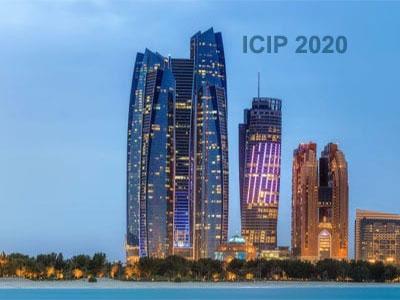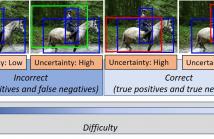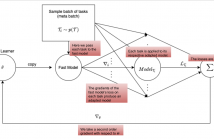
ICIP 2020 is a fully virtual conference. The International Conference on Image Processing (ICIP), sponsored by the IEEE Signal Processing Society, is the premier forum for the presentation of technological advances and research results in the fields of theoretical, experimental, and applied image and video processing. ICIP has been held annually since 1994, brings together leading engineers and scientists in image and video processing from around the world. Visit website.

- Read more about LIGHTWEIGHT IMAGE SUPER-RESOLUTION RECONSTRUCTION WITH HIERARCHICAL FEATURE-DRIVEN NETWORK
- Log in to post comments
- Categories:
 45 Views
45 Views
- Read more about Pose Guided Person Image Generation Based on Pose Skeleton Sequence and 3D Convolution
- Log in to post comments
- Categories:
 47 Views
47 Views
- Read more about Sparsity preserved canonical correlation analysis
- Log in to post comments
Canonical correlation analysis (CCA) describes the relationship between two sets of variables by finding linear combinations of the variables with maximal correlation. Recently, under the assumption that the leading canonical correlation directions are sparse, various procedures have been proposed for many high-dimensional applications to improve the interpretability of CCA. However all these procedures have the inconvenience of not preserving the sparsity among the retained leading canonical directions. To address this issue, a new sparse CCA method is proposed in this paper.
- Categories:
 33 Views
33 Views
- Read more about LOSS RESCALING BY UNCERTAINTY INFERENCE FOR SINGLE-STAGE OBJECT DETECTION
- Log in to post comments
- Categories:
 39 Views
39 Views
- Read more about DEEP SMOOTHED PROJECTED LANDWEBER NETWORK FOR BLOCK-BASED IMAGE COMPRESSIVE SENSING
- Log in to post comments
- Categories:
 59 Views
59 Views
- Read more about ICIP 2020 Paper #2783: FEW SHOT LEARNING FOR POINT CLOUD DATA USING MODEL AGNOSTIC META LEARNING
- Log in to post comments
The ability of deep neural networks to extract complex statistics and learn high level features from vast datasets is proven.Yet current deep learning approaches suffer from poor sample efficiency in stark contrast to human perception. Fewshot learning algorithms such as matching networks or ModelAgnostic Meta Learning (MAML) mitigate this problem, enabling fast learning with few examples. In this paper, we ex-tend the MAML algorithm to point cloud data using a Point-Net Architecture.
- Categories:
 226 Views
226 Views
- Read more about Motion Blur Prior
- Log in to post comments
Priors play an important role of regularizers in image deblurring algorithms. Image priors are frequently studied and many forms were proposed in the literature. Blur priors are considered less important and the most common forms are simple uniform distributions with domain constraints. We propose a more informative blur prior based on the notion of atomic norm which favors blurs composed of line segments and is suitable for motion blur. The prior is formulated as a linear program that can be inserted into any optimization task.
- Categories:
 29 Views
29 Views
- Read more about Development of New Fractal and Non-fractal Deep Residual Networks for Deblocking of JPEG Decompressed Images
- Log in to post comments
slides.pdf
- Categories:
 21 Views
21 Views
- Read more about Pairwise Adjacency Matrix on Spatial Temporal Graph Convolution Network for Skeleton-based Two-Person Interaction Recognition
- Log in to post comments
Spatial-temporal graph convolutional networks (ST-GCN) have achieved outstanding performances on human action recognition, however, it might be less superior on a two-person interaction recognition (TPIR) task due to the relationship of each skeleton is not considered. In this study, we present an improvement of the ST-GCN model that focused on TPIR by employing the pairwise adjacency matrix to capture the relationship of person-person skeletons (ST-GCN-PAM). To validate the effectiveness of the proposed ST-GCN-PAM model on TPIR, experiments were conducted on NTU RGB+D 120.
- Categories:
 111 Views
111 Views